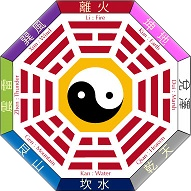
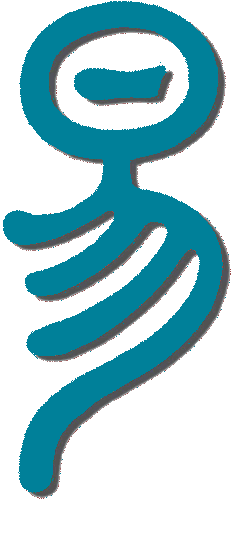
I Ching Explorer

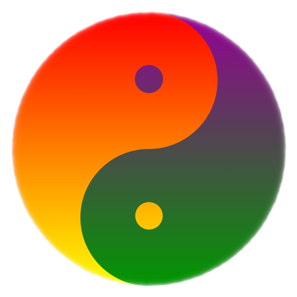
-
☯I Ching Basics
-
☯Consulting I Ching
-
☯Chinese Zodiac
-
☯I Ching Resources
-
If you like our web site and find it useful - donate with PayPal to support new development

Join our free I Ching Google Group. Ask your questions, get the answers from I Ching experts, learn new things about I Ching and grow with our I Ching Community
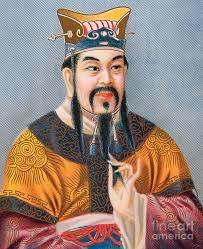
Hexagram Types
Hexagram invention and development is traditionally attributed to 4 ancient sages:
- Fu Xi - discovered 8 trigrams.
- King Wen - discovered 64 hexagrams, gave the names and wrote the comments to each hexagram.
- Duke of Zhou - wrote the line-level comments to each of 64 hexagram.
- Kong Qui (Confucius) - wrote his famous "Ten Wings" - philosophical comments to I Ching.
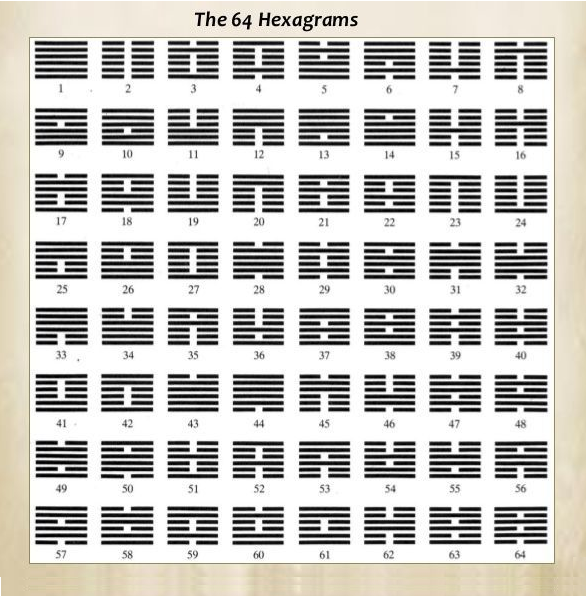
It is important to point out that hexagrams are related to each other and that each hexagram in this family of 64 has a group of associated hexagrams playing a special role for it.
"What are these groups ?" one may ask.
The following 5 hexagram types which exist for each of 64 hexagrams, define the content of those groups and should get considered first when it comes to the hexagram reading and interpretation.
- Nuclear Hexagram
- Inversed Opposite Hexagram
- Reversed Opposite Hexagram
- Rotated Hexagram
- Evolutional Hexagrams
Nuclear Hexagram
One of the ways to get deeper insights of your present situation expressed in the primary hexagram is to inspect its so called nuclear hexagram (Hu Gua).
Made of two “hidden” nuclear trigrams living inside primary hexagram this type of hexagram was invented by I Ching Scholars of Han dynasty (202 B.C. – 220 B.C.)
and is also referred to as core-, mutual-, inner-, kernel- or seed hexagram.
Lower nuclear trigram of nuclear hexagram is made of lines 2, 3 and 4 of primary hexagram
and upper nuclear trigram – from lines 3, 4 and 5.
Ancient sages considered these 4 internal lines to be a heart of any hexagram [8] p.17.
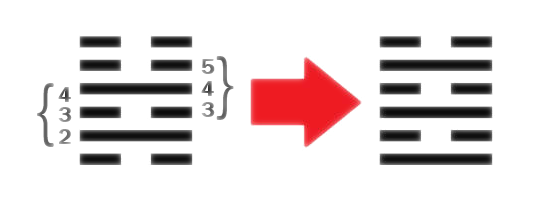
In a nutshell, every nuclear hexagram describes the hidden meaning of its Primary Hexagram and symbolizes the inner power and a kernel of situation described by it.
It is important to understand, that when primary hexagram represents the already formed, present situation, then nuclear hexagram highlights
the point of incubation and the hidden beginning, the origination stage of primary situation - it should never be ignored!
There are only 16 nuclear hexagrams in I Ching with each nuclear hexagram surrounded by 4 regular, satellite hexagrams orbiting each nuclear hexagram.
1
1
1, 28, 43, 44
2
2
2, 23, 24, 27
63
64
38, 40, 54, 64
64
63
37, 39, 53, 63
23
2
3, 8, 20, 42
24
2
4, 7, 19, 41
27
2
29, 59, 60, 61
28
1
30, 55, 56, 62
37
64
6, 10, 47, 58
38
63
5, 9, 48, 57
39
64
16, 21, 35, 51
40
63
15, 22, 36, 52
43
1
14, 32, 34, 50
44
1
13, 31, 33, 49
53
64
12, 17, 25, 45
54
63
11, 18, 26, 46
It being said, that 16 nuclear hexagrams - in turn - are being made of 4 special, second level kernel figures - 4-grams, as we will call them:

by adding yin and yang lines on the top and on the bottom of them.

by adding yin and yang lines on the top and on the bottom of them.
Bringing all these knowledge together we come up with the following important diagram:
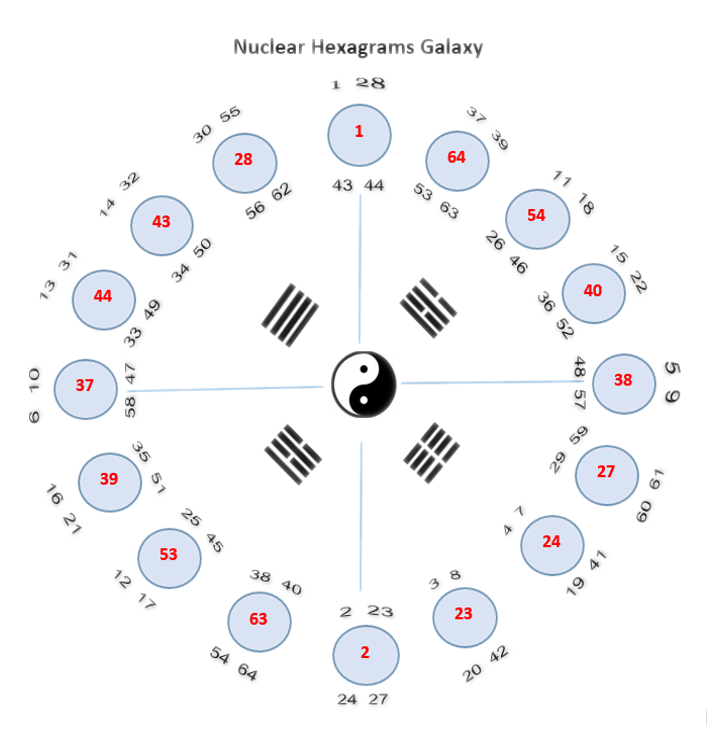
I Ching is a cosmic scale teaching, so we called this diagram a Nuclear Hexagrams Galaxy as it
has a form of planetary system, where 16 nuclear hexagrams (Planets) are orbiting Tai-Chi sign in the middle (Sun)
with each nuclear hexagram having its own 4 satellite hexagrams (Moons) as per table above.
Opposite Hexagrams
Phylosophically speaking, if something exists, then the opposite to that thing also exist.
In I Ching world this thesis is expressed in a concept of opposite hexagrams.
There are two main types of opposites of any primary hexagram – the first one is called Inversed Hexagram and the second one – Reversed Hexagram.
“What is the role and importance of opposite hexagrams?” one might ask. While primary hexagram represents “What Is” in your current situation – both opposite hexagrams represent “What Is Not”, doing it in their own unique way.
In a symbolic language ofI Ching it is an anti-world, a twilight zone, an opposite to where your situation is now.
In these terms, the Opposite Hexagrams play very special role as the understanding of “what-is-not” often times helps to understand better “what actually is”.
Inversed Opposite Hexagram
It is made of primary hexagram where each line is logically inverted - Yin lines become Yang and Yang lines – Yin.
Below is an example of one of this type of transformations.
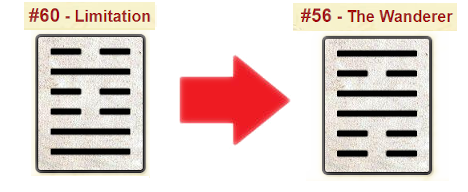 Let’s re-iterate it again - if primary hexagram represents “What Is” in your situation – the opposite hexagram indicates “What Is Not”.
As you can see in our example above, a primary hexagram #60 - Limitation (Restraint) has as its inversed hexagram a hexagram #56 - Wanderer (Journey or Transition).
What can be more opposite to anything restricted and limited than a transitioning and free ?!
Let’s re-iterate it again - if primary hexagram represents “What Is” in your situation – the opposite hexagram indicates “What Is Not”.
As you can see in our example above, a primary hexagram #60 - Limitation (Restraint) has as its inversed hexagram a hexagram #56 - Wanderer (Journey or Transition).
What can be more opposite to anything restricted and limited than a transitioning and free ?!
Reversed Opposite Hexagram
Reversed Hexagram is another powerful tool in understanding situation associated with Primary Hexagram.
Introduced by Master Lai Zhi De (1562 A.C. – 1609 A.C.) of the Ming dynasty this type of hexagram is made of primary hexagram with its lines presented in reversed top-bottom order.
Below is an example of primary hexagram #60 - Restraint (Limitation) and its reversed counterpart - hexagram #59 - Dispersion :
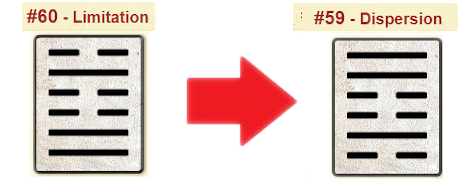 Note, if primary hexagram describes a development of situation in hexagram, going from the bottom to the top line, then reversed hexagram depicts the opposite situation,
where development goes in exactly opposite direction – from the top to the bottom.
Note, if primary hexagram describes a development of situation in hexagram, going from the bottom to the top line, then reversed hexagram depicts the opposite situation,
where development goes in exactly opposite direction – from the top to the bottom.
In reversed hexagrams time is turned back, denoting another, different from inversed hexagram way to describe what the primary hexagram IS NOT.
It is where time continuum breaks, it is where time is disconnected, turned around and then reconnected again in opposite to primary hexagram direction.
(Karcher p.56.)
So, if inversed hexagram depicts travel in anti-world, then reversed hexagram is a travel back in time.
And we can clearly see it in our example – if primary hexagram #60 Restraint describes how restraint was created,
then its reversed opposite hexagram #59 Dispersion explains how it is being dispersed and eliminated.
Rotated Hexagram
Rotated hexagram represents one elemental mutation of 6-step cyclic development which each hexagram can have in its life cycle.
To get Rotated Hexagram simply shift the lines of your primary hexagram one step up in cyclic manner with pushed-out top 6th line
returning back to the bottom and becoming the first line in the new hexagram.
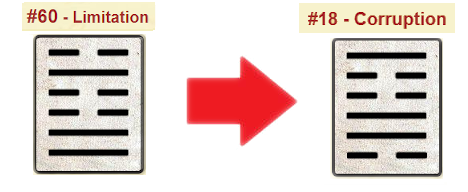
Note, that a rotation operator applied to any hexagram six consecutive times transforms that hexagram back to itself! This transformation is reminiscent to I Ching’s seasonal cycles and simply refers to the situation of cyclic development, when after six steps of development the change process returns to its beginning. Like in four seasons in nature - Spring transforms to Summer, then to Autumn and Winter, to become a Spring again!
Evolutional Hexagram
Evolutional (or Evolutionary) hexagram is an innovative modern hypothesis first proposed by Mondo Secter in 1975.
In his original book ([2], p. 61) he writes:
“It was inspired by references in original I Ching text and commentary such as: All movements are completed in six stages,
and the seventh brings return. This theory is also … implied in an historical diagram of 12 hexagrams called “seasonal cycle,”
used in ancient China for expressing and understanding the principles of medicine and agriculture, among other things.”
Mathematically speaking, evolutionary hexagrams are the close relatives to the rotated hexagram
with one important difference - shifted out 6th top line of primary hexagram gets first logically inverted – Yang line becomes Yin and Yin line becomes Yang -
and only then gets inserted to the bottom of hexagram.
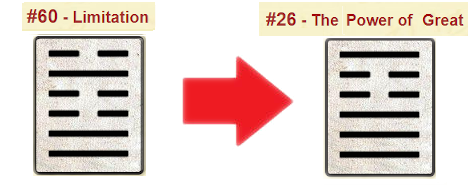
Note, that evolutionary operator applied to any hexagram 6 consecutive times transforms that hexagram to its own inversed opposite hexagram,
where all lines of original hexagram get logically inverted to their opposites.
Summary
Discussed here five types of monogram-based transformations - which create a group of five interrelated hexagrams
revolving around their primary hexagram - can be depicted in the following diagram:
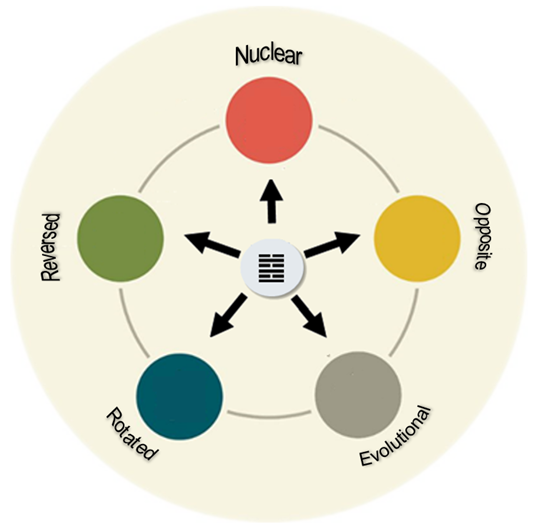
It is important to note that, described above five transformed hexagrams not only related to primary hexagram they are orbiting
but have also special relationships between themselves and can naturally transition to each other.
For example, Evolutional Hexagram can be produced from Rotated Hexagram
by applying logical inverse operation to its bottom line (first line of Rotated Hexagram).
Evolutional Hexagram in turn, naturally transforms to Inversed Opposite Hexagram
by applying evolutional operator [shift + inverse] to itself five additional times.
Inversed Opposite Hexagram naturally transforms back to Primary Hexagram
by applying evolutional operator [shit + inverse] to itself six consecutive times.
Other important transformations of I Ching hexagrams include traditional transformations related to hexagrams with moving lines
as well as a group of modern transformation techniques applied on the digrams and trigrams level.
These transformation types are discussed in details in Moving Lines and Gua Transformations sections in this web site.
 Join Now !
Join Now !